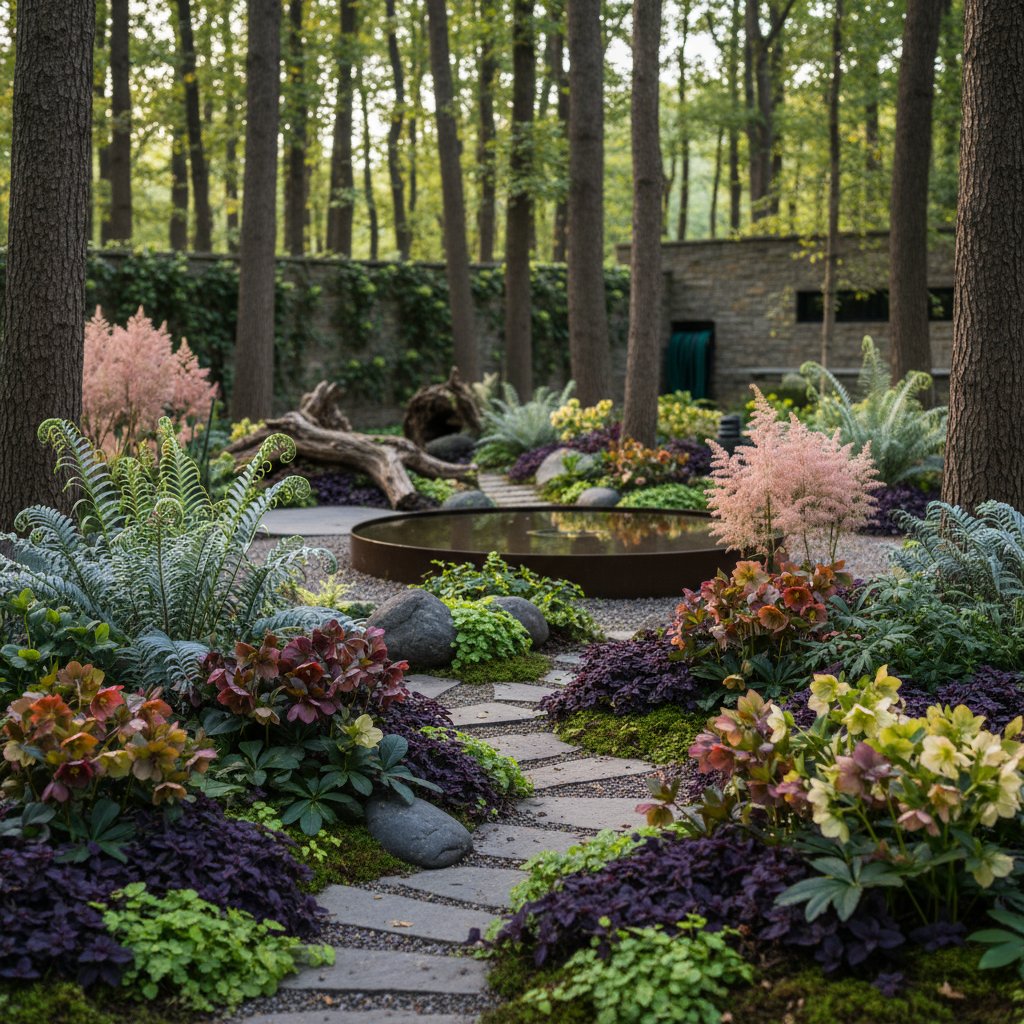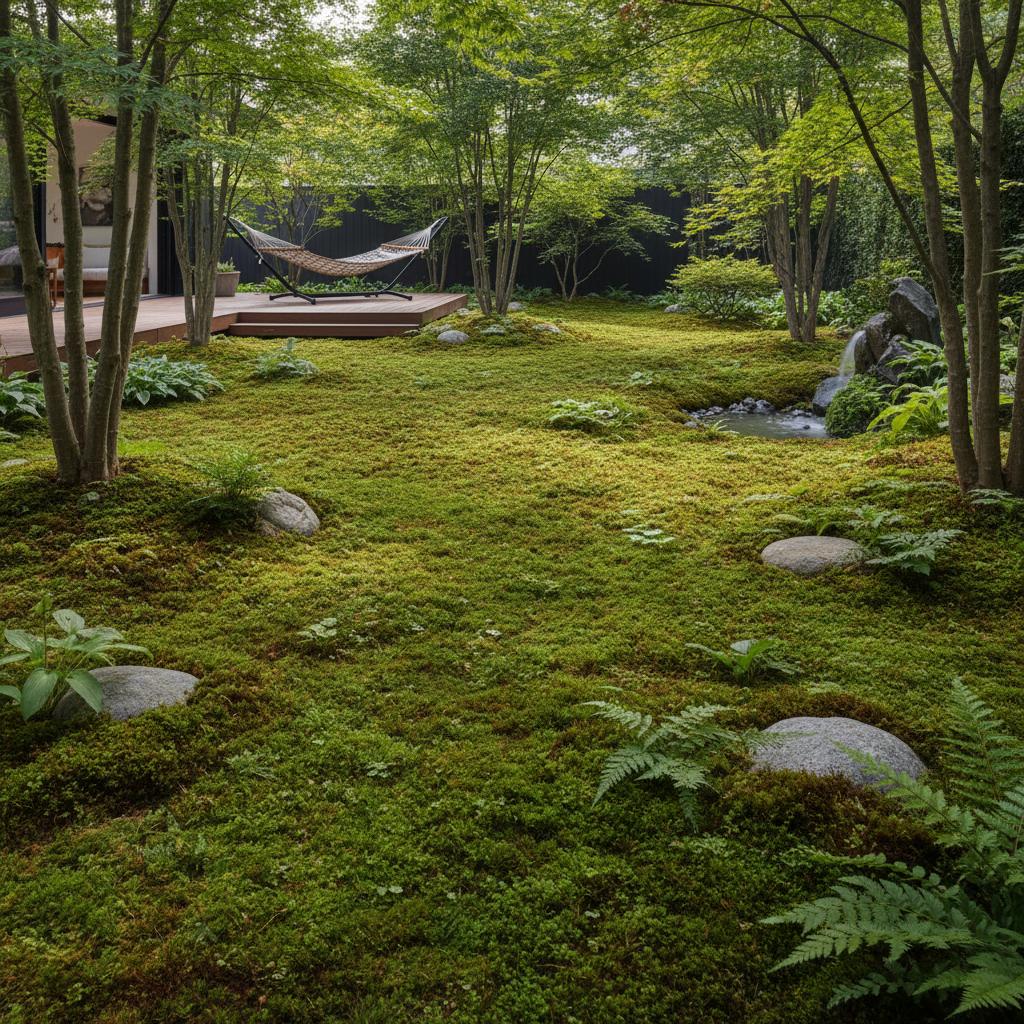Revolutionizing Shade Gardens with 2025 Low-Light Plants
Shade gardens possess a subtle elegance defined by texture, contrast, and tranquility. Filtered light through overhead foliage or reflected from nearby surfaces allows each plant to reveal its unique qualities. Gardeners often view low-light conditions as restrictive, yet emerging plant varieties challenge this notion by delivering depth, vibrancy, and resilience to shaded zones.
Effective shade gardening requires a shift in perspective. Sun-drenched areas emphasize bold hues and expansive floral displays, whereas shaded plots demand attention to finer elements like leaf contours and moisture retention on surfaces. By observing light patterns, soil moisture dynamics, and plant adaptations, gardeners unlock diverse options that enhance shaded environments.
Evolving Trends in Shade Gardening
Traditional shade gardens relied on staples such as hostas, ferns, and impatiens for their reliability and appeal. These selections endure due to their toughness and visual consistency. Recent advancements from plant breeders introduce low-light tolerant varieties that resist diseases, exhibit novel colors, and adapt to varied conditions.
This evolution extends to ecological considerations. Modern gardeners prioritize species that enhance soil quality, attract pollinators, and regulate water flow. Consequently, shade gardening transforms from mere decoration to integrated systems that harmonize aesthetics with environmental functionality.
Emphasizing Texture and Contrast
In low-light settings, texture serves as the primary visual element. The lustrous surfaces of aspidistra, or cast iron plant, capture scant illumination and pair effectively with the velvety textures of mosses or ferns. Japanese painted ferns contribute a luminous silver sheen that illuminates even the darkest spots.
Layering plants creates visual depth and interest. Position low-spreading ground covers, such as sweet woodruff, under mid-height perennials like hellebores or Solomon's seal. This method introduces dynamic layers, fostering a sense of abundance in compact shaded areas.
Standout Plants Expanding Shade Options
Contemporary shade palettes feature an array of resilient species. While hostas retain popularity, innovative alternatives provide fresh structures and aesthetics. Consider these selections for diverse applications:
- Brunnera macrophylla (Siberian bugloss): Features broad, heart-shaped leaves with silvery veining that brightens dim spots. Early spring yields clusters of sky-blue flowers resembling forget-me-nots; plant in moist, well-drained soil for optimal spread.
- Heuchera (Coral bells): Modern cultivars showcase foliage in shades from deep maroon to chartreuse and amber, offering year-round color. Select varieties like 'Palace Purple' for bold contrast; ensure good drainage to prevent root rot.
- Tiarella (Foamflower): A native perennial forming mounds of marbled leaves with frothy white spring blooms. It excels in woodland settings and complements ferns; divide clumps every three years to maintain vigor.
- Carex (Sedge): Ranges from slender green blades to striking copper tones, providing gentle motion in breezes. Tolerates wet soils; use 'Evergold' for variegated appeal in borders.
- Epimedium (Barrenwort): Thrives amid tree root competition with wiry stems bearing delicate, spurred flowers and leathery leaves. Ideal as a drought-tolerant ground cover; trim spent foliage in late winter.
- Pulmonaria (Lungwort): Displays speckled foliage and early blooms in pink-to-blue hues, supporting spring pollinators. Position near bulbs for sequential interest; mulch to retain moisture.
These plants accommodate dappled to dense shade. Test combinations in your site, monitor performance, and refine groupings seasonally for best results.
Exploring Alternatives to Hostas
Hostas symbolize shade gardening with their expansive foliage and steady growth. Increasing challenges from slugs and environmental shifts prompt exploration of substitutes. The aim involves complementing hostas with diverse forms to boost resilience and variety.
Promising options include Bergenia, Ligularia, and Rodgersia. Bergenia offers leathery, evergreen leaves in temperate zones, accented by magenta spring flowers; it withstands dry shade effectively. Ligularia demands consistent moisture but delivers theatrical, rounded leaves up to two feet wide. Rodgersia provides sculptural, palmate foliage that rustles attractively; site it in fertile, humus-rich soil.
Integrate these with ferns, ornamental grasses, and dwarf perennials to deter pests and sustain visual appeal. Avoid uniform blocks by varying leaf textures and heights, which creates softer transitions and a more vibrant bed.
Understanding Low-Light Plant Dynamics
Success in shade gardening hinges on light assessment. Distinctions between east-facing morning shade and west-facing afternoon cover, or open versus closed canopies, dictate plant suitability. Track daily light exposure to identify brighter pockets that influence growth and bloom cycles.
Soil preparation counters nutrient competition from overhead trees. Incorporate compost annually to enrich texture and fertility, mimicking woodland duff. Apply two-inch mulch layers to conserve water and suppress weeds while fostering microbial activity.
Irrigation practices adapt to shaded retention. Opt for infrequent, thorough soakings to promote robust roots, avoiding shallow sprinkles that invite fungal issues. Monitor for dry spells near structures, adjusting as needed for plant health.
Crafting Mood and Practicality in Design
Shade gardens evoke serenity, suited for contemplation over spectacle. Define the desired ambiance, whether a monochromatic green sanctuary or a textured woodland glade with intermittent blooms. Select textures, hues, and forms to evoke that essence.
Achieve unity through repeated motifs. Employ silver foliage from brunnera or artemisia as linking elements across sections. Incorporate natural materials like gravel paths or log edging to enhance the organic flow.
Practicality addresses site challenges. Near foundations or slopes, deploy erosion-control ground covers such as pachysandra or vinca. Taller specimens like astilbe soften vertical surfaces; choose adaptable plants to ensure durability in microclimates.
Incorporating Subtle Hues
Low-light colors emphasize cool spectrums for maximum visibility. Blues, violets, and ivories emerge clearly against shadowy backdrops. Accents like dicentra's heart-shaped pink blooms or corydalis's buttery yellows provide focal points without overwhelming.
Foliage variegation amplifies light reflection. Patterned selections in heuchera or pulmonaria serve as natural spotlights. Blend these strategically to form a cohesive scheme that shifts subtly with sunlight angles, maintaining year-round intrigue.
Advancing Sustainable Practices
Emerging low-light plants align with eco-conscious gardening. Many demand minimal inputs, thriving on native adaptations that reduce watering and interventions. Local species outperform exotics in shaded niches, bolstering habitats for fauna.
Recycle autumn leaves as mulch to recycle nutrients and build soil organic matter. Avoid chemical controls by selecting pest-resistant cultivars and encouraging beneficial insects. These strategies yield resilient gardens that evolve into balanced ecosystems.
Nurturing Long-Term Shade Success
Shade gardens develop gradually, with plants establishing and interweaving over seasons. Embrace this pace, observing details like emerging fronds or dew-kissed leaves. Such attentiveness yields profound satisfaction akin to vibrant sunny displays.
Sustain vitality through minimal interventions. Thin overcrowded areas for circulation, and refresh soil with compost yearly. Favor stability over frequent alterations to allow natural maturation and enduring beauty.



